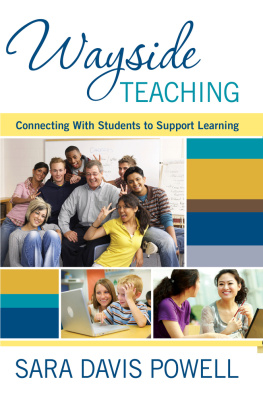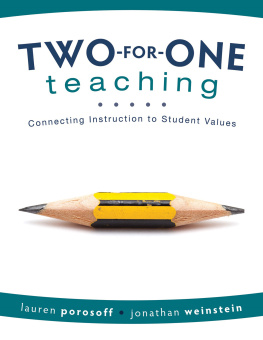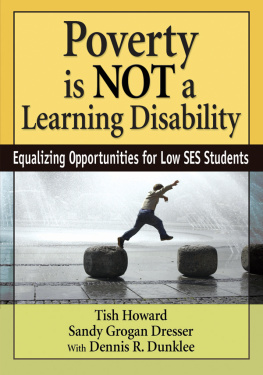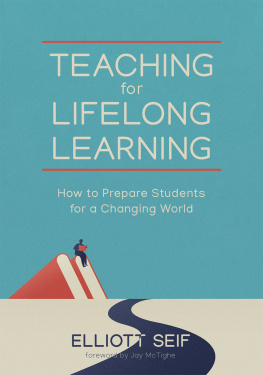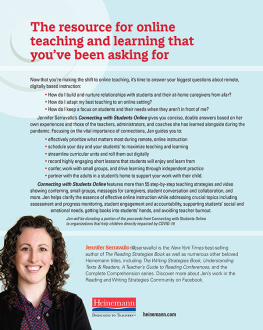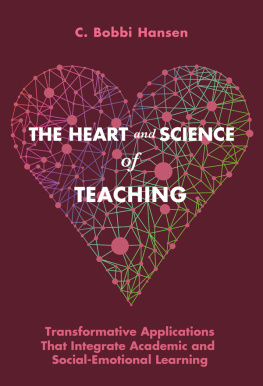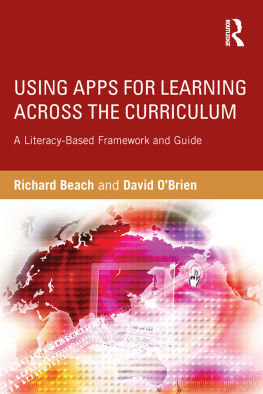Copyright 2010 by Corwin Press.
First Skyhorse Publishing edition 2018
All rights reserved. No part of this book may be reproduced in any manner without the express written consent of the publisher, except in the case of brief excerpts in critical reviews or articles. All inquiries should be addressed to Skyhorse Publishing, 307 West 36th Street, 11th Floor, New York, NY 10018.
Skyhorse Publishing books may be purchased in bulk at special discounts for sales promotion, corporate gifts, fund-raising, or educational purposes. Special editions can also be created to specifications. For details, contact the Special Sales Department, Sky Pony Press, 307 West 36th Street, 11th Floor, New York, NY 10018 or .
Skyhorse and Skyhorse Publishing are registered trademark of Skyhorse Publishing, Inc., a Delaware corporation.
Visit our website at www.skyhorsepublishing.com.
10 9 8 7 6 5 4 3 2 1
Library of Congress Cataloging-in-Publication Data is available on file.
Cover design by Scott Van Atta
Print ISBN: 978-1-63450-728-8
Ebook ISBN: 978-1-63450-729-5
Printed in the United States of America
Contents
List of Figures
Preface
W ayside Teaching: Connecting With Students to Support Learning defines the most important relationship in educationthe relationship between teacher and student. This relationship is unavoidable and can be extremely powerful. One more certainty: Our relationships with students are up to us. Making the most of these relationships is what wayside teaching is all about.
Wayside teaching is not an add-on, not a program, not fluff, andvery important for teachers, students, and schoolswayside teaching is not anti-accountability. On the contrary, wayside teaching practices enhance academic learning and complement academic rigor because they build student self-concept, motivate learners to engage in the curriculum, and provide a sense of belonging and safety that help free learners to participate more fully in their own education.
Multiple research studies verify the link between what this book calls wayside teaching and student learning. The benefits of wayside teaching span physical, cognitive, emotional, social, and character-building aspects of teaching and learning. Through Wayside Teaching: Connecting With Students to Support Learning, we come to understand that the connection between teacher and learner is a major factor in student achievement. Once this is established, we go on to explore how to expand our influence through wayside teaching practices. What we do beyond the structured lesson plan, and who we are as individual role models and mentors, matter to both affective and academic student development.
W HO S HOULD R EAD W AYSIDE T EACHING : C ONNECTING W ITH S TUDENTS TO S UPPORT L EARNING ?
This book is for teachers of all levels of experience and expertise.
For those with flourishing, successful careers in the classroom, this book is an affirmation of their practice, with no doubt more than a few new ideas. We can always get better!
For those who are not so sure their classroom skills and methods are where they should be in terms of connecting with kids to support learning, this book will help bring clarity and new dimensions to practice with strategies that can be immediately put into place.
And for new teachers, this book provides insights and rationale for the value of developing strong relationships, based on the undeniable fact that we teach who we are. New teachers will understand and acquire skills and strategies for making the relationship connections that lead to higher levels of learning.
H OW I S W AYSIDE T EACHING : C ONNECTING W ITH S TUDENTS TO S UPPORT L EARNING O RGANIZED ?
Teachers know that activation of prior knowledge is a vital part of learning. The Introduction serves this purpose. Teachers are asked to complete a 70-item self-analysis that gets to the heart of attitudes, approaches, and actions that make up wayside teaching. The results of the self-analysis are then plotted on a grid to provide a starting point for thinking about how to enhance the tremendous potential of wayside teaching.
Because the phrase wayside teaching may be new terminology to many, centers on defining aspects of the attitudes, approaches, and actions of teachers who practice it. Research is presented that supports wayside teaching as a vital contributor to academic success and to improvement of behavior.
is the how to of wayside teaching. Featured are 12 components that teachers can make realities in their classrooms, all framed in the attitudes, approaches, and actions of wayside teachers. Here are the 12 components:
1. Know your students
2. Practice little gestures that matter
3. Reveal your personal self
4. Create and maintain an inviting classroom
5. Promote a culture of acceptance and compassion
6. Help students find their voice
7. Learn to listen
8. Speak carefully
9. Teach skills that help students become autonomous, not anonymous
10. Build resiliency
11. Encourage imagination and creativity
12. Infuse humor
.
pulls it all together with a summary of what weve discussed in the first five chapters, followed by a perspective on the typical ways education leaders have approached reform. Quite opposite to the one-size-fits-all methodology, wayside teaching is an individual-based reform that maximizes the Power of One one teacher, with his or her own classroom of children or adolescents. Six goals for wayside teachers are presented, including:
1. Be a reflective teacher
2. Be an observer of students
3. Assume the best
4. Be a positive role model
5. Make wayside teaching habitual
6. Experience the joy of teaching!
Resource A provides eight classroom-ready surveys to help teachers get to know their students interests and learning preferences. Resource B provides 36 recommended books with brief descriptions that will help teachers decide on books that specifically suit their learners needs.
W HAT A RE THE S PECIAL F EATURES OF W AYSIDE T EACHING : C ONNECTING W ITH S TUDENTS TO S UPPORT L EARNING?
This book is interactive, with concepts illustrated by real teacher experiences and insights.
Readers complete a personal self-analysis in the Introduction and plot their results on a chart, the process of which activates what we know about our own attitudes, approaches, and actions regarding wayside teaching.
Wayside teachers in elementary, middle, and high school classrooms are highlighted through scenarios about teaching practices that help illustrate important concepts.
In , teachers are encouraged to write about how they will increase the power of their presence with regard to each of the 12 components of wayside teaching, with space provided for reflection.
Resource A provides eight student surveys teachers may use to get to know their students and their learning preferences.
Resource B provides 36 recommended books that promote acceptance and compassion for elementary, middle, and high school classrooms. Each book is briefly described to introduce it to teachers.
Acknowledgments
W ayside teaching, while encompassing practices as old as teaching itself, was named and explained only two decades ago by a man to whom I owe much appreciation. Thank you, Dr. John Lounsbury, for making wayside teaching part of your relationships with children and adults alike. I also want to thank all of the wonderful teachers who have touched my life with your encouraging personal attention to relationships as part of the teaching and learning process. Special thanks to my husband, Rus, and my four sons, Jesse, Cody, Travis, and Noah. I continue to learn from each of you every day.

